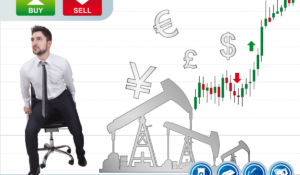Introduction
In the world of forex trading, understanding the concept of pips is essential. Pips play a crucial role in determining profits and losses, as well as measuring the spread between bid and offer prices. In this comprehensive guide, we will delve deeper into the topic of pips, covering everything from their definition to calculating their value. By the end of this article, you will have a solid understanding of pips and how they impact your trading.
What is a Pip?
A pip, short for “percentage in point,” is the smallest unit of price movement in the forex market. It represents the fourth decimal place for most major currency pairs, except for those involving the Japanese yen, where pips are measured at the second decimal place. The value of a pip varies depending on the currency pair and the size of the trade.
For example, if the bid price for the EUR/USD currency pair is 1.1738 and the ask price is 1.1737, the difference between the two prices is one pip. Similarly, if the bid/offer prices for the USD/JPY currency pair are 105.96 and 105.95, respectively, the spread is one pip. Understanding the concept of pips is crucial for evaluating the cost of trading and assessing potential profits or losses.
What is a Pipette?
In recent years, the intense competition among online brokers has led to a refinement of pricing. Instead of competing on pips, brokers now compete on pipettes. A pipette is one-tenth of a pip and is represented by the fifth decimal place in currency pairs quoted to five decimal places. This allows for even tighter spreads and better trading terms for forex traders.
For instance, if the bid price for a currency pair is 1.17519 and the ask price is 1.17513, the difference between the two prices is six pipettes. The calculation is done using five decimal places: 1.17519 – 1.17513 = 0.00006. The use of pipettes provides traders with more precision when measuring price movements.
Calculating the Pip Value
To fully grasp the impact of pips on your trading, it is crucial to understand how to calculate the value of a pip. The pip value represents the monetary value of each pip movement in your chosen currency pair. It is determined by the size of your trade and the specific currency pair you are trading.
The formula for calculating the pip value is as follows:
Pip Value = (Pip in decimal places / Exchange Rate) x Trade Size
Let’s consider an example to illustrate this calculation. Suppose we want to calculate the pip value for a trade of 10,000 units of the USD/JPY currency pair, with a pip size of 0.01 JPY. Assuming an exchange rate of 1 USD = 106.14 JPY, we can calculate the pip value as:
Pip Value = (0.01 JPY / 106.14 JPY) x 10,000 USD = 0.00009422 USD
Therefore, for every pipette change in value, the trade would be worth approximately 0.9422 USD. Calculating the pip value allows traders to assess the potential profit or loss for a given trade and incorporate it into their risk management strategy.
Pips and Profitability
Understanding the role of pips in determining profitability is crucial for forex traders. The profit or loss on a trade is directly influenced by the number of pips gained or lost. For example, if a trader bought the EUR/USD currency pair at 1.17710 and later sold it at 1.17790, the trade would have made a profit of 80 pips.
It’s important to note that the pip value can vary depending on the currency pair being traded. Different currency pairs have different exchange rates, which directly impact the pip value. Therefore, it is essential to consider the specific currency pair being traded when assessing potential profits or losses.
Pips, Pipettes, and Market Conditions
Market conditions can affect the spread between bid and offer prices, leading to variations in the measurement of pips and pipettes. During periods of high market liquidity, spreads tend to tighten, and prices may be quoted in pipettes. Conversely, during quieter market conditions, spreads may widen, and prices may be quoted in terms of pips.
It’s important for traders to stay up-to-date with market opening hours and be aware of potential changes in spread measurement. Understanding how market conditions can impact pips and pipettes allows traders to adapt their strategies accordingly and make informed trading decisions.
The Impact of Hyperinflation and Currency Devaluation
In extreme cases, such as hyperinflation or currency devaluation, the value of a pip can become almost insignificant, making trading technically impossible. Hyperinflation refers to a situation where the monthly inflation rate exceeds 50%, leading to a rapid decline in the value of a currency.
During hyperinflation, the value of a currency can decline so rapidly that the smallest unit of price movement, such as a pip, becomes inconsequential. In such circumstances, it becomes challenging for traders to accurately measure and predict price movements. It’s crucial for traders to closely monitor economic and political developments in countries experiencing hyperinflation or currency devaluation to assess the feasibility of trading in those markets.
Common Queries About Pips
1. Are pips the same for all currency pairs?
No, the value of a pip can vary depending on the currency pair being traded. Each currency pair has its own exchange rate, which directly affects the pip value. Major currency pairs, such as EUR/USD or GBP/USD, typically have smaller spreads and higher liquidity, resulting in smaller pip values. On the other hand, exotic currency pairs tend to have wider spreads and lower liquidity, leading to larger pip values.
2. Can pips be negative?
Pips are a measure of price movement and are inherently positive or negative. If a trader enters a long position and the price moves in their favor, they gain positive pips. Conversely, if the price moves against their position, they incur negative pips. Profit and loss in forex trading are determined by the number of pips gained or lost.
3. How can I minimize the impact of pips on my trading?
To minimize the impact of pips on your trading, you can focus on selecting currency pairs with tighter spreads. Major currency pairs typically have lower spreads compared to exotic pairs. Additionally, implementing risk management strategies, such as setting stop-loss orders and properly sizing your positions, can help mitigate potential losses caused by unfavorable pip movements.
4. Can I trade fractional pips?
While most trading platforms display prices in pips or pipettes, some brokers allow for trading fractional pips. These fractional pips, also known as pip fractions or pipettes, provide traders with greater precision in measuring price movements. However, it’s important to note that not all brokers offer this feature, so traders should check with their broker’s platform specifications.
Key Takeaways
- Pips, or percentage in point, represent the smallest unit of price movement in the forex market.
- Pips are typically measured in the fourth decimal place, except for currency pairs involving the Japanese yen, which are measured in the second decimal place.
- Pipettes are one-tenth of a pip and are represented by the fifth decimal place in currency pairs quoted to five decimal places.
- Calculating the pip value allows traders to assess potential profits or losses for a given trade.
- Market conditions can affect the spread between bid and offer prices, leading to variations in the measurement of pips and pipettes.
- Understanding the impact of pips on profitability is crucial for effective risk management in forex trading.
- Hyperinflation and currency devaluation can render pips almost insignificant, making trading challenging in such circumstances.
- Traders should be aware of the specific pip value for each currency pair they trade and consider market conditions when assessing potential profits or losses.
In conclusion, understanding pips is essential for forex traders as they provide a measure of price movement and directly impact profitability. By grasping the concept of pips, calculating pip values, and considering market conditions, traders can make informed trading decisions and manage risk effectively. Stay vigilant, adapt to changing market conditions, and continuously refine your trading strategies to navigate the dynamic forex market successfully.








